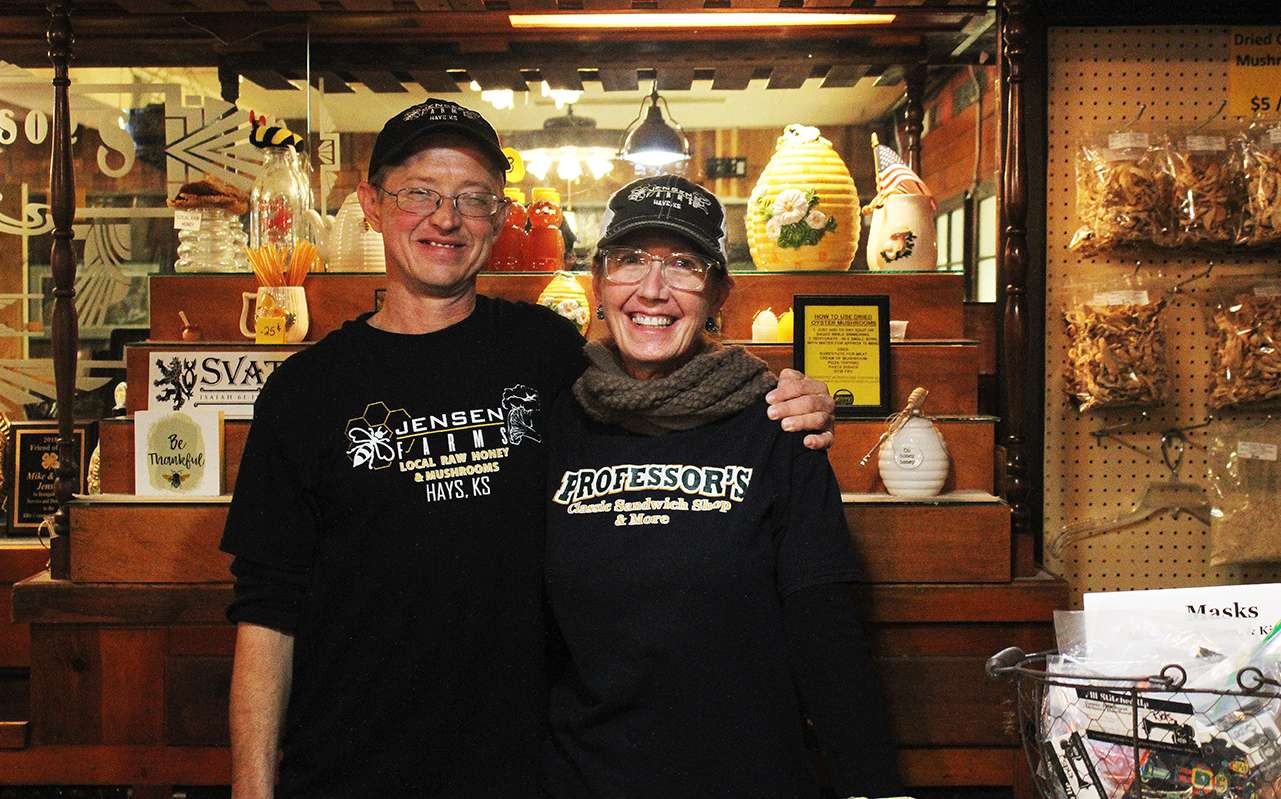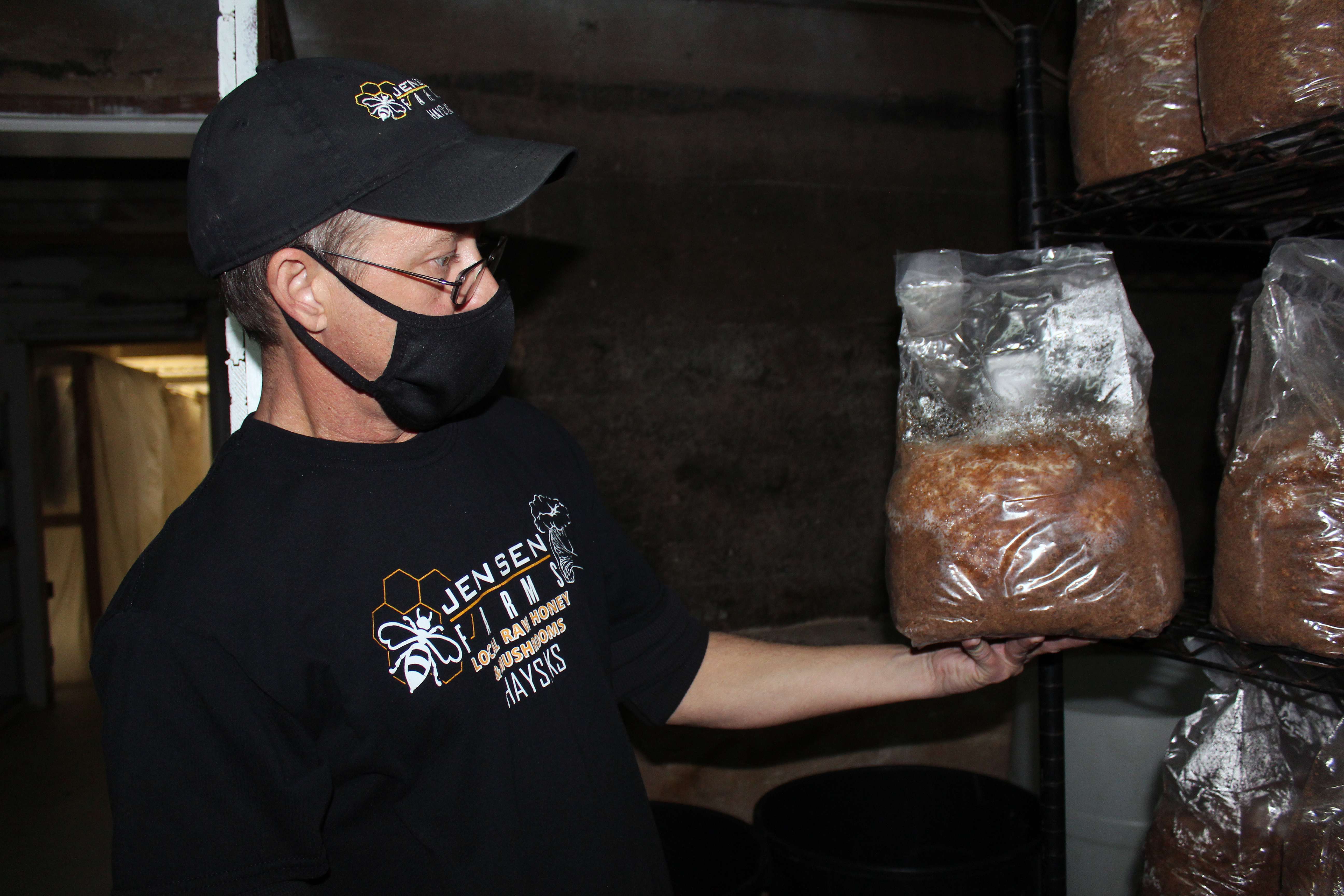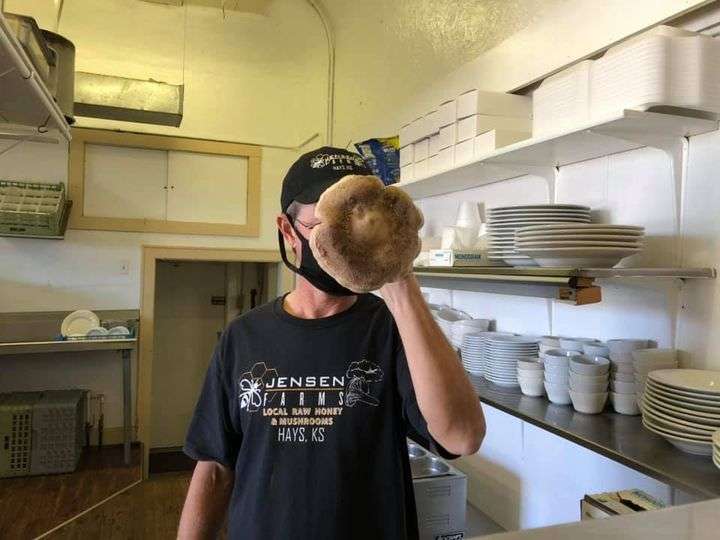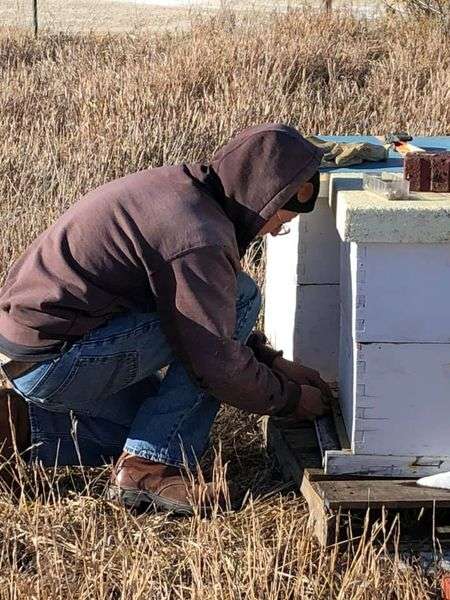
By CRISTINA JANNEY
Hays Post
As you walk into Professor's Classic Sandwich Shop in Hays, you are greeted by the a bright, cheery atmosphere, the wood floors of the old depot from which the shop was built and and the bar from the shop's old night club days.
Many diners are unaware that below their feet is a commercial mushroom growing operation.
Mike and Amy Jensen, owners of Professor's and Jensen Farms, grow mostly oyster mushrooms, but also some lion's mane and shiitke mushrooms in their basement operation.
The mushrooms are used in a variety of dishes at the restaurant, including mushroom chili, soup, stir fries and mushroom taco salad. Amy's mother bakes on a pre-order basis and uses the mushrooms in cinnamon rolls and bierocks.
The family sells fresh or dried mushrooms along with raw honey at the restaurant and at the Downtown Hays Market.
The operation also ships to Kansas City, sells mushrooms to Gella's Diner and hopes to also offer the mushrooms at Philip Kuhn's new grocery store that he is opening soon on Main Street.
"I'm trying to make it more mushroom friendly around Hays and just teach people about them," Mike said.
Mike Jensen, 47, began hunting wild morel mushrooms when he was a kid with his parents. After he graduated high school, he began growing his own mushrooms for personal consumption.
He still hunts wild mushrooms whenever he can. He was leading mushroom forays (mushroom hunts), but those have been put on hold due to the pandemic.
He began growing mushrooms commercially five years ago.

Mysteries of growing mushrooms
The Jensens' oyster mushrooms are grown on black tubes filled with cotton hulls and straw, agriculture by-products.
Oyster mushrooms take about three weeks to grow and will last about three months.
The Jensens produce about 30 pounds of mushrooms per day.
They also grows shiitake and lion's mane mushrooms, but Mike said they are more temperamental and take longer to grow.
The Jensens maintain the basement at about 90 percent humidity by pumping warm steam into tent rooms. Water quality is important in raising mushrooms, so heating the water also helps eliminate impurities in the water, Mike said.
The mushrooms convert the water into fruit. Eight pounds of water will result in comparable weight in mushrooms, Mike said.

Tastes like crabmeat
Oyster mushrooms have a neutral flavor, which is why Mike uses them in stir fries and adds taco seasoning to them for his taco salads.
Jensen also grows shiitake mushrooms, which have a stronger more earthy flavor profile, and lion's mane mushrooms, which Mike said taste like of crab meat.
Mike said he uses the lion's mane mushroom in the place of fish in a seafood taco.
"You would not know the difference," he said.
The Jensens also sometimes order chanterelle mushrooms, which have a sweeter taste, from Oregon. Some chefs make ice cream using the chanterelles.
"Mushrooms, people either love them or they hate them," Mike said. "The reason why they hate them is because of the button mushrooms sold at your normal supermarket that are grown on manure.
"The button mushroom is probably one of the blandest mushrooms out there. That is what, so to speak, gives mushrooms a bad name."

Mushrooms as a hazmat team
Mushrooms are a complete protein. Oyster mushrooms are high in vitamin D, as well as contain other vitamins and minerals.
Not only are mushrooms a healthy food, but they can also be beneficial to the environment. Mushrooms are a natural hazmat crew. They are often used to help clean up chemical spills, Mike said.
"They take the chemicals out of the dirt and break down the hydrocarbons in the chemicals, and you can eat the mushroom, and it cleans the soil," Mike said.
The process is called mycoremediation.
Scientists have also discovered certain mushrooms can eat plastic and have been used in landfill projects, Mike said.

Pandemic bust
Prior to the pandemic, the Jensens signed a contract to sell mushrooms to US Foods. They leased a large warehouse and ramped up production to grow 1,000 pounds of mushrooms a week.
However, the pandemic hit, and US Foods canceled its contract. The Jensens dried and froze as many of the 25,000 pounds of the mushrooms they grew as they could, but still had to give some of the harvest away.
Many mushroom producers went bankrupt as a result of the pandemic because they hand no outlet for their mushrooms, Mike said.
Mike estimated between the loss of the contract with US Foods and losses at the restaurant the business lost about $1 million due to the pandemic.
The Jensens are in the process of building a new mushroom facility on their farm, nine miles north of the Yocemento exit, which they hope will allow them to again increase production without the increased overhead.
Mike said he hoped to sign another commercial contract for his mushrooms after the pandemic passes.

Hometown honey
The Jensens also raise honey bees on their farm, which is primary in natural grasses and wildflowers. Amy and Mike have had the hives for about 11 years.
The family usually operates 50 to 75 hives, but this year they are increasing to 100 hives.
The operation yields about 4,000 to 6,000 pounds of raw honey per year.
Mike said he enjoys sharing his bee knowledge and hopes to have some classes through the Extension office, but the pandemic has put those on hold.
Most microorganisms will not grow in honey, which means it has been used from ancient to modern times to treat wounds. It will never go bad. It may harden, but can be brought back to a liquid by slowing heating.
Mike also championed the use of honey as a sweetener.
"This doctor gave me the best presentation on that aspect of it," Mike said. "He held up an apple and a bottle of honey. He said the sugars in this bottle of honey are more related to this apple than they are table sugar, so its just the natural sugars."
Honey also is filled with vitamins, minerals and amino acids.
The family uses their hometown honey in cookies that are served with every meal at the restaurant.
"We are always learning, that is what I love about [honey and mushrooms]," Mike said "Knowledge is power to me, and I really like learning a lot of different stuff."






